Ed Gorman's Blog, page 121
July 31, 2013
Day Keene from Pulp Seranade

Ed here: This is from the fine great website Pulp Serenade. Cullen Gallagher's take on Day Keeneis one of the most unique and nuanced I've ever read. This particular piece speaks of a time that is almost unimaginable. Gold Medal Originals being reviewed in The New York Times. That Anthony Boucher guy really was a saint.
Cullen Gallagher:
So, what did the critics make of someone like Day Keene back in the day?
This is the first in what I hope will become an ongoing series of explorations into criticism on classic writers, and how their works were received in their own time. For my first posting, I chose one of my favorite novelists: Day Keene (real name Gunard Hjerstedt).
When going through newspaper archives online, I was surprised by how often Day Keene’s work was reviewed in the New York Times. What wasn’t surprising was that it was mostly the work of Anthony Boucher, one of the most famous and important mystery reviewers of the 20th century, and perhaps one of the best critics in general. His reviews may have been short, but they were unerringly perceptive, and often pretty damn funny.
The one thing that kept popping up from review to review was the amount of sex and violence in Day Keene’s books – apparently the critics were sufficiently shocked enough to warn readers in advance. Oh, Gunard…
Without further ado, I am handing things over to the critics! Framed in Guilt : The story is a great deal better than the atrociously punning title might lead one to hope. –Unsigned (New York Times, Jan 16, 1949)
Death House Doll : Action-crammed, legitimately sexy, with some ironic bite to its hardness, it’s a strong job of good pulp story-telling, in the “Black Mask” tradition. –Anthony Boucher (New York Times, Jan 24, 1954)
Joy House : A bit more conventional than usual… but the story of a murderer on the lam who seeks concealment in a curious sexual alliance is well constructed and sharply twisted in the James M. Cain manner. –Anthony Boucher (New York Times, Jul 25, 1954)
Who Has Wilma Lathrop? Day Keene manages to treat a vivid and violent plot with unusual restraint and quietly convincing realism… Sex and brutality are here integral to the plot and handled with skill and taste, and the writing, in characterization, prose and movement, is the best I’ve read from the always interesting Mr. Keene. –Anthony Boucher (New York Times, Jul 10, 1955)
Bring Him Back Dead : It’s all somewhat oversexed and oversimplified, but fast and concise. –Anthony Boucher (New York Times, Oct 21, 1956)
Passage to Samoa : Combines murder-mystery with the unfailing appeal of ship-wrecked treasure in a lively and enjoyable adventure tale, in which the copious lashings are necessary to the plot. –Anthony Boucher (New York Times, Jan 18, 1959)
for the rest go here:
http://www.pulpserenade.com/2010/11/d...
Published on July 31, 2013 12:24
July 30, 2013
Leigh Brackett: Much More Than the Queen of Space Opera!
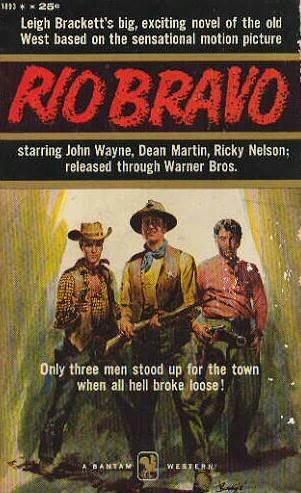


Ed here: One of my all-time favorite writers and an interesting piece I slightly disagree with in places.I think there are similarities in all of Brackett's work especially in the structures she used. She ghosted a novel for actor George Sanders and the opening two-page description has the sweep and myatery of onef her sf adventures. BTW Stranger is one of her finest books, And certainly there are similarities between her hard boiled heroes in space and here on earth. But Falk's piece is a good one and will hopefully make a few of you buy some cheap online prints of her books.
Leigh Brackett:
Much More Than the Queen of Space Opera!by Bertil Falkpart 1 of 2
When Howard Hawks (1896-1977) planned to make a screen version of Raymond Chandler’s The Big Sleep in 1946, he happened to read “No Good from a Corpse” by Leigh Brackett (1915-1978). Hawks was not overly impressed by the story, but he most certainly appreciated the dialogues. It is understandable. The story is perhaps not that good, but the way it is written. “Wow!” he said, “get me that Brackett guy” or words to that effect.To his surprise a lanky young woman turned up at his office. And who can blame him? Leigh is an ambiguous first name, mostly interpreted as a male name. And how could he possibly imagine in those days that a woman wrote the most hardboiled and hard-hitting punch cues in Hollywood?Hawks straightaway overcame his surprise, hired her and in the long run Leigh Brackett became his favorite scriptwriter. She was professional and reliable. Over the years, he summoned her over and over again. And lo, in this the 21st century, her old crime stories and space operas are brought to light and praised again.In retrospect, Leigh Brackett turns out to be a somewhat different bird in the world of writers. She moved freely and without any apparent difficulties between differing genres like mysteries, westerns, fantasy, science fiction. Certainly, other writers have done the same, but on top of that, she moved equally unhindered between different media: novels, short stories, films, TV, radio. Just imagine how many combinations you can get out of that.In addition to her brilliant handling of dialogues, she had an excellent faculty for visualizing and an impressive ability to characterize; and at the end many of her stories are replete with over- and undertones of a rare existential quality.When James Sallis reviewed Martian Quest: the Early Brackett (Haffner Press, 2002) in Fantasy & Science Fiction, he stated that as “with many true originals, much of Brackett’s work, for all its seeming diversity — hardboiled, standard mystery, Westerns, high fantasy, science fiction — falls in a straight line.”Sallis points out that her first published short story, “Martian Quest,” is “a transliteration of the standard Western plot: stranger with mysterious past rides in from off-planet to a farming community in the reclaimed Martian desert, meets a fine woman, encounters distrust and rejection, solves the community’s problems and saves all.”But I do not think of science fiction when I read her crime stories. I do not think of fantasy when I read her western stuff. I do not think of mysteries when I read her space operas and — in spite of Sallis’ accurate observation — I do not even think of Westerns when reading “Martian Quest.”There may be similar plots, similar frames of minds and atmospheres in her writing. Even though she was not a stranger to crossover genres and subcategories, at the end there are sharp dividing lines between many of the different genre stories she tried her hand and mind at. The cruel but outstanding noir story “Red-Headed Poison” (1943) has for example very little in common with the science-fiction story “The Jewel of Bas” (1944) — the latter in itself a gem.
for the rest go here:http://www.bewilderingstories.com/iss...
Published on July 30, 2013 10:57
July 29, 2013
Difficult Men: Behind the Scenes of a Creative Revolution
by Emma G. Keller guardian.co.ukDifficult Men: Behind the Scenes of a Creative RevolutionSummer is the season for TV as well as reading. Let's put that slightly differently – summer is the time for binge viewing. Which means that Brett Martin's Difficult Men: Behind the Scenes of a Creative Revolution: From The Sopranos and The Wire to Mad Men and Breaking Bad is the perfect book for this time of year.Martin's book is a companion to the best series of the 1990s and 2000s. If you're watching (or re-watching) The Wire, Deadwood, Breaking Bad,Mad Men or Six Feet Under this summer, Martin has the inside scoop on how these shows got made. And for those of you who went back to watch early episodes of The Sopranos in a state of shock after James Gandolfini's sudden death in June, this book will be irresistible.Martin has the inside scoop, in part because in 2007, the GQ correspondent was hired by HBO to write an official behind-the-scenes companion to The Sopranos. He was given incredible access to the show's production of its final season.Martin is a deft writer who used his contacts wisely – which is to say he doesn't fall in love with the people who granted him access. There's no glossing over the flaws here. Instead, the actors, the suits and, particularly, the showrunners/executive producers are presented in their full egomaniacal glory.The book begins with the disappearance of James Gandolfini while The Sopranos was in expensive mid-shoot: "one cold winter's evening in January 2002, Tony Soprano went missing and a small portion of the universe ground to a halt."Gandolfini was having an increasingly difficult time plumbing the depths of Tony Soprano. Martin describes:
[Gandolfini was in] a self-directed rage as he struggled to remember lines in front of the camera – he would berate himself in disgust, curse, smack the back of his own head …"for the rest go here:http://www.guardian.co.uk/books/2013/...-
best-nonfiction-brett-martin
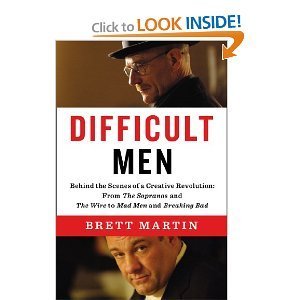
Published on July 29, 2013 15:07
July 28, 2013
Film Noir: Escaping One Prison for Many By DAVE KEHR

July 26, 2013
Escaping One Prison for Many By DAVE KEHR From The New York Times
“Crashout,” a 1955 film noir directed by Lewis R. Foster, begins under the opening credits with a violent prison revolt, much of it constructed from footage borrowed from Don Siegel’s “Riot in Cell Block 11,” released just one year earlier. As crowds of angry men brave machine-gun fire from the guard towers and surge toward the prison walls, a few get over the top and run for cover. Foster singles out six of the escapees with individual close-ups, labeling each with the name of the actor who plays him.
Here are a half-dozen of the most recognizable performers in the genre: William Bendix, returning to his roots in noir after a few years of playing a cuddly sitcom dad on the television series “The Life of Riley”; Arthur Kennedy, who had moved on from the original cast of “Death of a Salesman” to play a remarkable series of morally ambiguous figures in films like Anthony Mann’s “Bend of the River” and “The Lusty Men”from Nicholas Ray; the gnomish character actor Luther Adler (who provided such memorable villainy in the John Wayne adventure “Wake of the Red Witch”); William Talman, a pioneering screen psychopath (in films like Ida Lupino’s 1953 thriller “The Hitch-Hiker”) who later found fame as the eternally unlucky district attorney on “Perry Mason”; Gene Evans, the growling fireplug who was Sam Fuller’s favorite top sergeant (“The Steel Helmet,” “Fixed Bayonets!”); and the boyish Marshall Thompson, who had played a murderous mental patient in Gerald Mayer’s innovative 1950 thriller “Dial 1119.”
“Crashout” is structured around names and lists: a later sequence reintroduces the characters with a montage of their individual wanted posters, and as each escapee is brought to earth in turn, the wanted posters reappear, with the word “deceased” stamped across them. The film becomes a grim game of Six Little Indians, as each of the characters is systematically eliminated — film noir fatalism at its starkest.For Foster, “Crashout” may have been an escape attempt as well; there is certainly little else like it in his long and varied filmography, which includes Laurel and Hardy shorts, the original story for “Mr. Smith Goes to Washington,” and a long run of low-budget westerns and adventure films made for Pine-Thomas Productions, which supplied B-movies for release through Paramount. “Crashout” was Foster’s first film after his association with Pine-Thomas ended with the frothy 3-D musical “Those Redheads From Seattle,” and the film’s starkness and brutality, even at a time when restrictions on screen violence were loosening, could hardly provide a more vivid contrast with Foster’s past work.for the rest go here:
http://www.nytimes.com/2013/07/28/movies
/homevideo/in-crashout-new-to-dvd-convicts-
rush-to-nowhere.html
Published on July 28, 2013 07:01
July 27, 2013
Spike Lee's "Essential Films"
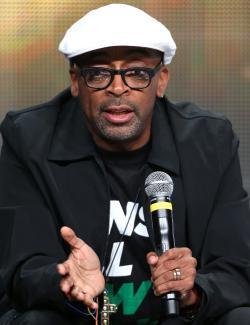
Ed here: This list will surprise some, infuriate others. But as a Spike Lee fan ("The 25th Hour" is a masterpiece) I find it fascinating,
From Slate:
Perhaps in an attempt to drive attention toward his struggling Kickstarter , Spike Lee has posted his list of “Essential Films,” the movies he believes every filmmaker needs to see. The list, featuring close to 100 films, is handed out to Lee’s graduate students at NYU every year, and is a fascinating peek into the director’s influences and favorites—from the expected picks ( Vertigo , Rashomon , 8 ½) to the more surprising ones ( Kung Fu Hustle , Bad Lieutenant , Mel Gibson’s Apocalypto ).Curiously, there are a lot of revered directors missing from the list—for example, there’s no Howard Hawks, John Ford, Fritz Lang, or Yasujirō Ozu. And some of the renowned filmmakers he does include are represented by less obvious choices: Steven Spielberg’s Empire of the Sun (along with Close Encounters of the Third Kind ), Woody Allen’s Zelig . Perhaps most radically, Orson Welles’ Citizen Kane is absent, with Lee citing only the legendary filmmaker’s Touch of Evil .

 (Thanks to Spike Lee for permission to reprint.)
(Thanks to Spike Lee for permission to reprint.)
Published on July 27, 2013 06:42
July 26, 2013
"The Whislter" series with Vince Keenan

Ed here: A few years ago I interviewed friend and noirist supreme Vince Keenan--screenwriter-blogger-alcoholic-beverage-expert--about a series of B pictures we both love, "The Whistler." Well, I watched two of them this week-and they held up fine--so I thought i'd reprint this Q&A from 2010.
Vince Keenan
Tell us about the transition of The Whistler radio show to a Columbia series of B pictures.
The Whistler began on radio in May 1942, and for most of its thirteen year run aired exclusively on the West Coast. In each episode, the title narrator – who knew many things, for he walked by night – would recount the story of an ordinary person forced by circumstance into committing a crime only to be delivered to justice in some ironic fashion. The Whistler’s presence made the series unique; he was omniscient but indifferent, occasionally taunting or encouraging the poor souls he already knew to be doomed. He also made the program easy to adapt for the silver screen, delivering exposition and smoothing over transitions. Columbia snapped up the property, put its B-movie factory to work, and cranked out eight movies from 1944 to 1948. It’s the only film noir series produced by the studio system.
Why was Richard Dix an unlikely choice for star of the films?
Dix was one of the few actors to make the transition from silent to sound films successfully. He was nominated for the Best Actor Academy Award in 1931 for Cimarron. But even during his peak he was a performer of limited range. He’d always been a prodigious drinker, and by the time of the Whistler films he was in poor health. Somehow the foggy aura he’d acquired at this stage of his life helped the Whistler series. Dix genuinely seems beset on all sides in these movies.
In your article in the Noir City Sentinel you talk about William Castle and his use of Hitler to drum up business for one of his plays.
It’s an early example of the carny-style moxie that would later make Castle’s reputation. In 1941 Castle had taken over Orson Welles’ theater in Connecticut. He’d signed a well-regarded German actress to appear in a play by a new German author. (Castle had actually written it himself over two days in order to sidestep union regulations about casting foreign talent.) When his leading lady was invited to return to the Fatherland to perform Castle responded on her behalf, sending the rejection directly to Hitler and making sure the press heard about it. He then vandalized his own theater and placed the blame on phantom Nazi sympathizers. Hollywood called soon after.
You feel Castle did a fine job with the Whistlers, right?
Absolutely. Harry Cohn handpicked him to direct the first entry in the series, and Castle would make three more. He established the tone for the entire run of the films. He might have tortured Richard Dix by forcing him to quit smoking and playing mind games with him on the set, but it lead to some compelling performances. Castle is primarily remembered for promoting horror movies with gimmicks like seat cushion joy buzzers, but the Whistler films are a reminder that he was an accomplished director of suspense who could create thrills on a budget.
You wrote: “It’s no surprise that the series turned next to Cornell Woolrich.” Would you explain that?
Woolrich and the Whistler share a deeply fatalistic worldview. They both walk down the dark side of the street. They inhabit a universe where no one is safe, where chance is a constant factor, where doing the right thing may only dig you in deeper.
A number of writers have said that the series is almost oppressive in its darkness. Would you agree with that?
Largely, yes. Most of the films resolve themselves into happy endings, but fate plays a disconcertingly large role in that outcome. Things could have very easily gone another way. And the isolation of modern life is a frequent subtext.
Which do you think are the two best and two worst of the series?
The critical consensus pegs 1946’s Mysterious Intruder as the top Whistler movie. In the 1970s a film magazine even called it “perhaps the best of the non-Chandler private eyes of the period.” But my favorite is The Mark of the Whistler, a Woolrich adaptation from 1944. Dix is a transient who learns that when you claim money belonging to someone who shares your name, you inherit that person’s enemies as well. I’m also partial to Voice of the Whistler (1945), with Dix playing a man who fears he might actually die of loneliness. It’s easily the strangest of the eight films, with an almost Gothic quality.
The worst film is easy: The Secret of the Whistler (1946). Never ask a cowboy actor to play a foppish artist. And the final entry, 1948’s The Return of the Whistler, is a non-starter in spite of being based on Woolrich. It’s the only one of the movies that Dix isn’t in, and for all his limitations the big lug is genuinely missed.
Published on July 26, 2013 13:44
July 25, 2013
Western Noir--Jake Hinson

Ed here: Jake Hinson writes fine noirish fiction and fine noirish essays. Here's just one more example.
Noir is like a disease. Its symptoms are moodiness, despair, guilt, and paranoia. There were early strains of it in German Expressionism; in the crime fiction of Woolrich, Holding, and Cain; in the prewar American cinema of Welles, Ingster, and Huston. The first full-fledged outbreak started somewhere in the war years. Some say Street Of Chance in 1942; others point to Double Indemnity and The Woman In The Window in 1944. Gradually noir spread out of the crime genre, however, and attached itself to different genres. Perhaps the first victim was the cinematic stalwart, the Western.At first glance the Western would seem antithetical to noir. (A fetishist for strict definitions would probably insist that noir be defined essentially as a crime genre. I’m taking more of a thematic approach, here, interpreting noir as something closer to a moral thesis: that people are weak and existentially screwed.) The tropes of the Western—sunlight, open spaces, nature—would seem to immune to the noir disease. But make no mistake, the Western caught the disease. A genre that seemed to be the quintessence of American optimism, a genre that seemed to embody the notion of moral clarity, slowly gave way to darker themes and more neurotic characters.
for the rest go here:
http://www.criminalelement.com/blogs/...-
plains-jake-hinkson-noir-western-film-robert-mitchum-barbara-stanwyck
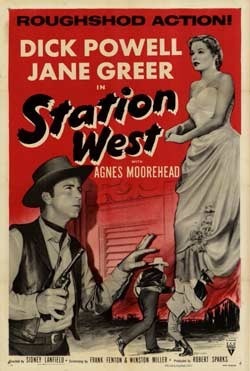
Published on July 25, 2013 12:36
July 24, 2013
NEMESIS by Bill Pronzini; The Rap Sheet

It's very close to a law that many series begin to fade in ingenuity and passion before their creators finally give up on them. Since moving to Forge Bill Pronzini has recreated his Nameless books, giving them new feature characters and new structures in the telling of the stories. NEMESIS is one of my all-time favorite Nameless novels. Here we meet one of Pronzini's most fascinatingly drawn (and devious) women the lovely Verity Daniels who would make any sane man suspicious because of the way she comes on to him in her disturbed amused way and because right from the start her story seems shaky. There is, she claims, somebody trying to extort her though she can't imagine how in all her innocence she could be blackmailed being such a fine upstanding person including having nothing to do with the death of her fiance.
Jake Runyon (a complex, believable character) handles the case as Nameless' partner in the agency (Nameless is tending to Kerry who is still dealing with the trauma of her kidnapping from the last novel--Pronzini skillfully merges elements of two books). But Verity soon proves to be unhelpful,the supposed blackmailer doesn't show up and Runyon extricates himself from the suspicious case.
Then Verity claims that Runyon raped her and is soon after found murdered. Runyon is of course the number one suspect at which point Tamara Corbin (who not only runs the office but also proves vital to solving some of the cases) and Nameless join together to rescue Runyon from the murder charge.
The three act structure, with each act propelled by a different agency character and powerful insights into detectives and suspects alike, make this, first of all, a page-turner and second of all an example of how a master (a Mystery Writers of America Grand Master in fact) can revitalize a long running series. And in this case demonstrate that Bill Pronzini is a more commanding stylist than ever.
Flat out five stars for a winner in every respect.
-----------THE RAP SHEET
For those of you interested in the second part of my interview with J. Kingston Pierce (from last night)
http://therapsheet.blogspot.com/
Published on July 24, 2013 14:52
July 23, 2013
J. Kingston Pierce Interviews me for Kirkus
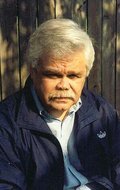
BALLOTS AND BULLETS: GORMAN BRINGS THE MYSTERY BACK TO POLITICSby J. Kingston Pierce (The Rap Sheet) on July 23, 2013I’m always surprised when I hear longtime followers of crime and mystery fiction say they’ve never read anything by Ed Gorman. I mean, really, what does Gorman have to do to capture their attention? He’s churned out novels—around 100 of them so far—over the last three decades. He has also penned myriad works of short fiction, edited anthologies of crime, horror and western tales, supplied introductions to collections of stories he didn’t also edit, and along the way lent his enthusiasm and support to younger writers who still believe they have something unique to ...Read the full post >https://www.kirkusreviews.com/
features/mysteries-and-thrillers/
Published on July 23, 2013 13:57
The second issue of Grift is now available!
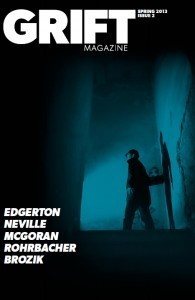
The second issue of Grift is now available!Believe me, it was worth the wait. The issue includes an exhaustive (yet incredibly captivating) interview of Les Edgerton, another with Stuart Neville, and a look a the film noir woodcuts of Loren Kantor.The fiction section is beefed up considerably from the first issue with stories from Erik Arneson, Jack Bates, Matthew Brozik, Lawrence Buentello, Holly Day, Salvatore Falco, Andy Henion, Davin Ireland, David James Keaton, Jon McGoran, Chad Rohrbacher, Helen Maryles Shankman, and Martin Zeigler.Get it here.
http://www.lulu.com/shop/john-kenyon/...
Published on July 23, 2013 11:11
Ed Gorman's Blog
- Ed Gorman's profile
- 118 followers
Ed Gorman isn't a Goodreads Author
(yet),
but they
do have a blog,
so here are some recent posts imported from
their feed.



